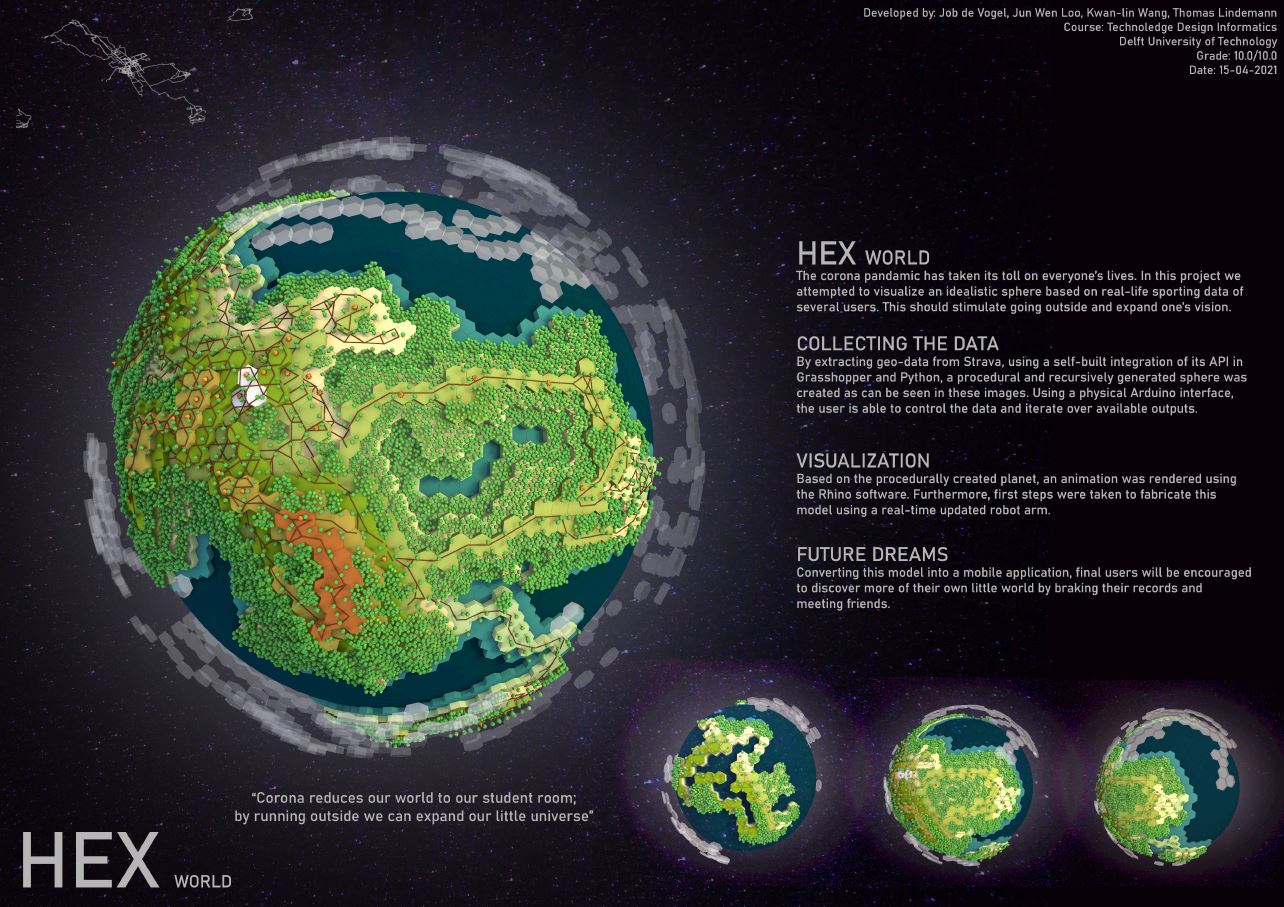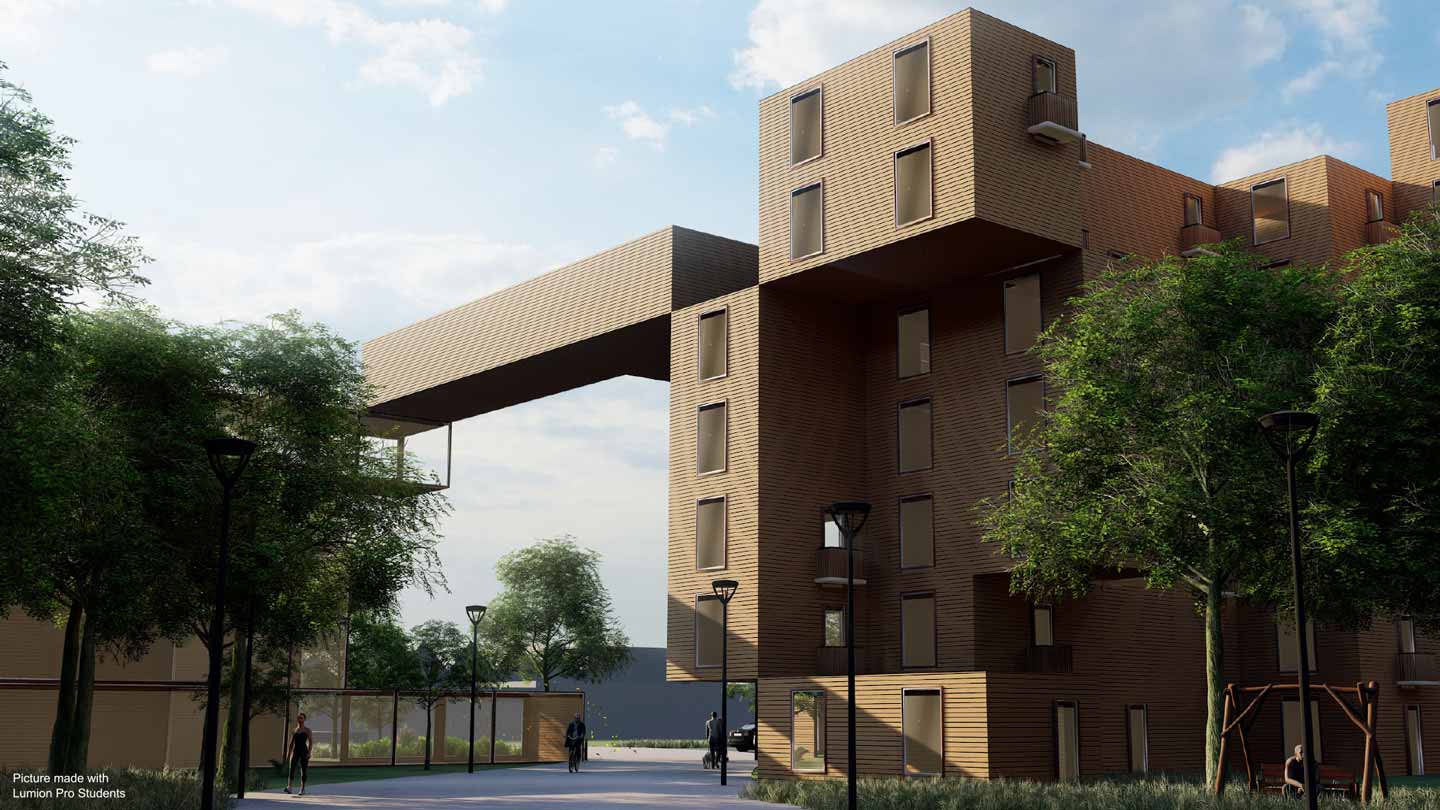Hex World
Stimulate outdoor activities through a virtual world

Name
Hex World
Author
- Job de Vogel
- Jun Wen Loo
- Kwan-Lin Wang
- Thomas Lindemann
Year
2021
Educational weight
5 ECT (140 hours)
Software
Strava, McNeel Rhino, Python, Grasshopper, Arduino
Additional Information
One of the main challenges of the COVID-19 lockdown for students in the Netherlands, was sitting behind a desk at home all day long. Corona makes our world smaller, but by sporting outside we can experience the world as a greater and more beautiful place. In this project, we created a planet creation visualization within a McNeel Rhino environment, that stimulates sporting in the physical world.
By using the Strava (sport app) API, it was possible to collect live geographical data and numerical data about our sporting activities and converted the data to a 2D map in Rhino using Python and Grasshopper. Next, this 2D data was mapped to a sphere. By developing a recursive algorithm in Python, I was able to create a 3D terrain that indicates the intensity of activities. Smaller objects on the sphere, like bonfires and trees, indicate special achievements, like breaking a record.
For this project we used several methods and techniques. Personally, I was responsible for guiding the team, because of my prior knowledge in (visual) programming. My main personal contributions are mentioned in the previous paragraph. Other teammates focused on converting our digital model to a fabrication model using Robots, and outputting the data using Arduino. Our project was graded with a 10/10.
To visualize this project, we used McNeel Rhino as main interface. The data was collected using IronPython (expecially webscraping libraries). Using the PyFirmata Python 3 package I helped my teammates to convert the output to a physical Arduino output. The video on the left is a visualization of the recursive mountainization algorithm.
Spatial Computing
Optimized building based on dynamic space agents
Name
Urban Green City
Author
- Job de Vogel
- Victor Wernet
- Ida Bølling Konsted
Year
2019
Educational weight
10 ECT (280 hours)
Software
Houdini, SideFX, Python, C++, McNeel Rhino, Lumion,
Photoshop

Additional Information
The minor Spatial Computing was my first experience with real optimization based on shortest-path algorithms, dynamic space agents and linear algebra. Our assignment was based on an existing building block in the city center of Rotterdam, the Netherlands. By generating a voxel cloud and analyzing numerical values like sunlight, noise and a program of requirements, we were able to generate a building based on ideal positions for each function.
For this project, we used Houdini and the programming language SideFX, C++ and Python. Within the group, I was responsible for the dynamic placement of the program functions. After completing this minor, I rebuilt the A-start path finding algorithm to a Grasshopper implementation, to use in future projects. The final renders were made using Rhino and Lumion.